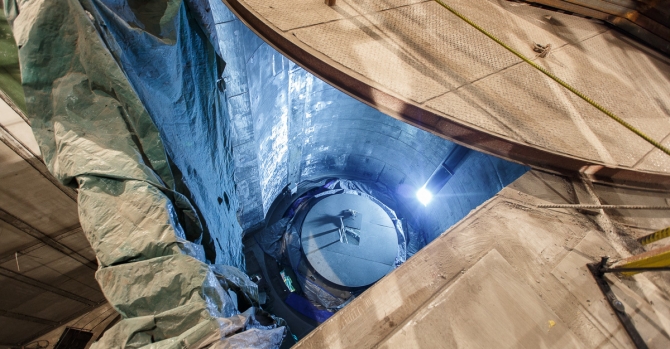Launch Is Near As Hydrualic Testing Starts At Unit 2 Of BelNPP
BelarusFeed
3 June 2019, 18:26
 The first unit of the Belarusian NPP prepares its systems and equipment for the hydraulic tests of the first and second circuits for strength and density, Rosatom reports.
The first unit of the Belarusian NPP prepares its systems and equipment for the hydraulic tests of the first and second circuits for strength and density, Rosatom reports.
The first circuit of the reactor was filled in with chemically demineralized and desalted water.
A lot of work has been done on the installation of technological systems and equipment, including the assembly of the reactor, before the start of the process.
This was stated by Vitaly Polyanin, the Vice President of Rosatom subsidiary ASE Company and supervisor of the BelNPP project, who later explained:
“The results of work, as well as the entire set of as-built documentation, were provided to the customer and the Gosatomnadzor of the Republic of Belarus.
In the coming days, it is planned to test the main circulation pumps, to fill the steam generators with chemically demineralized water from the secondary circuit and the hydro testing of the first and second circuits.”
Testings are scheduled to start in early June. Before the launch of the BelNPP this autumn, there are a number of stages to go through.
“We are approaching it, we are preparing for it. We still have to go through a series of stages. Now we are at the stage of individual testing of equipment, the next stage is hydro testing, washing out, cold and hot run stage.
Next step is a review of the equipment. If there are no serious force majeure at the run-in stage, we’ll be ready for a physical launch in autumn,” noted Deputy Minister of Energy Mikhail Mihadyuk.
Delivery of fuel to the Belarusian NPP is planned for the third quarter of the year. “We will deliver fuel in a month before the physical launch of the NPP when we are fully ready for this stage,” said Mihadyuk.
Russian Atomstroyexport is the contractor building the BelNPP is being built near Ostrovets, Grodno Oblast, featuring two VVER-1200 reactors with the total capacity of 2,400 MW.
The first power-generating unit is scheduled for commissioning in 2019, with the second one to go online in 2020.
3 June 2019, 18:26

Photo: TUT.BY
The first circuit of the reactor was filled in with chemically demineralized and desalted water.
A lot of work has been done on the installation of technological systems and equipment, including the assembly of the reactor, before the start of the process.
This was stated by Vitaly Polyanin, the Vice President of Rosatom subsidiary ASE Company and supervisor of the BelNPP project, who later explained:
“The results of work, as well as the entire set of as-built documentation, were provided to the customer and the Gosatomnadzor of the Republic of Belarus.
In the coming days, it is planned to test the main circulation pumps, to fill the steam generators with chemically demineralized water from the secondary circuit and the hydro testing of the first and second circuits.”
Testings are scheduled to start in early June. Before the launch of the BelNPP this autumn, there are a number of stages to go through.
“We are approaching it, we are preparing for it. We still have to go through a series of stages. Now we are at the stage of individual testing of equipment, the next stage is hydro testing, washing out, cold and hot run stage.
Next step is a review of the equipment. If there are no serious force majeure at the run-in stage, we’ll be ready for a physical launch in autumn,” noted Deputy Minister of Energy Mikhail Mihadyuk.
Delivery of fuel to the Belarusian NPP is planned for the third quarter of the year. “We will deliver fuel in a month before the physical launch of the NPP when we are fully ready for this stage,” said Mihadyuk.
Russian Atomstroyexport is the contractor building the BelNPP is being built near Ostrovets, Grodno Oblast, featuring two VVER-1200 reactors with the total capacity of 2,400 MW.
The first power-generating unit is scheduled for commissioning in 2019, with the second one to go online in 2020.

